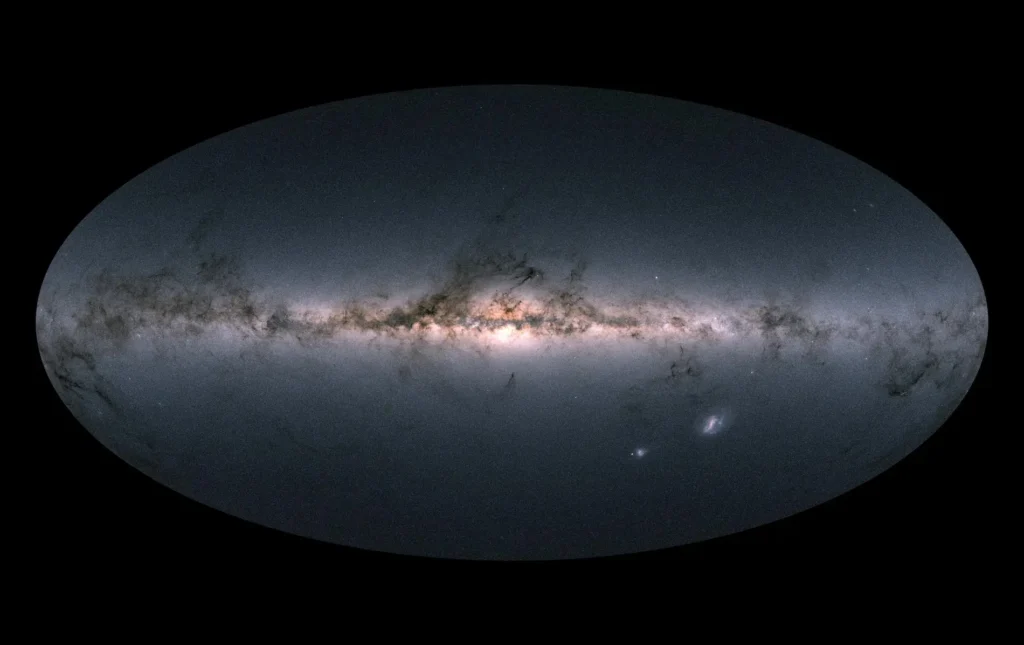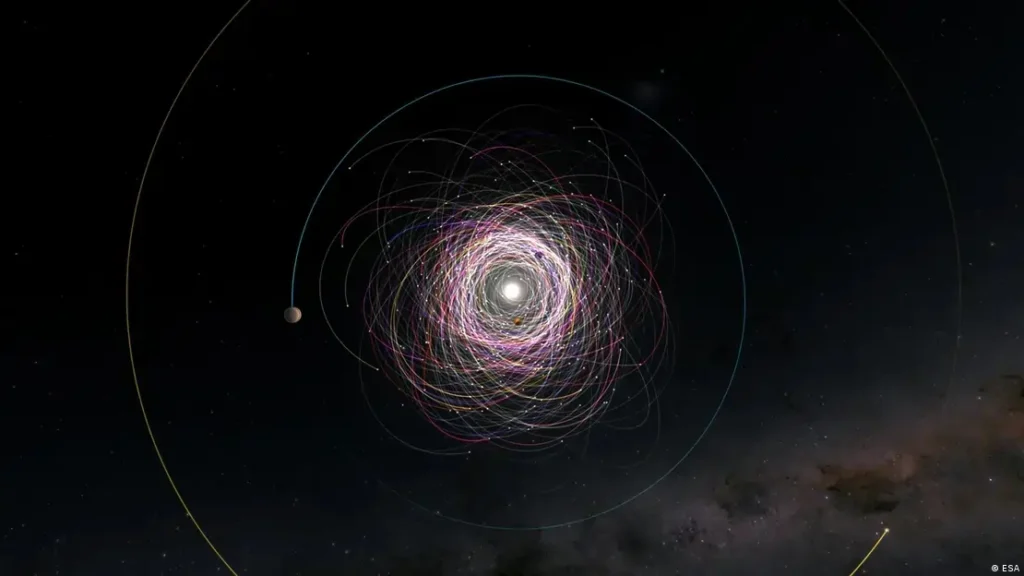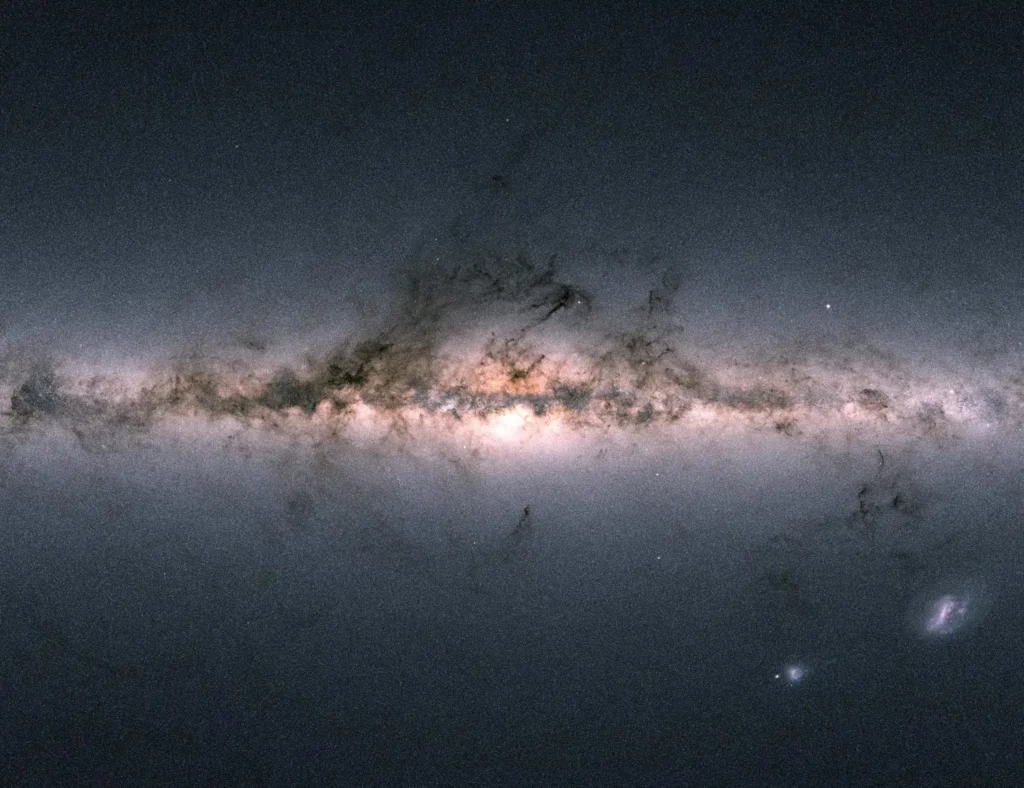Embarking on a celestial odyssey, the Gaia space observatory, launched by the European Space Agency (ESA) a decade ago, has embarked on a monumental mission: to map the Milky Way in three dimensions. With cutting-edge technology and unwavering determination, Gaia has revealed countless wonders of the cosmos, shedding light on the mysteries that shroud our universe. From charting stars to unveiling the secrets of globular clusters, Gaia’s journey offers a captivating glimpse into the vast expanse of space and our place within it.
Table of Contents
Key Points:
- Gaia’s Mission: Launched by ESA, Gaia aims to map the Milky Way in three dimensions, uncovering countless wonders of the cosmos and advancing our understanding of the universe.
- Exploring Globular Clusters: Scientists turned to globular clusters, dense collections of stars, to illuminate obscured regions of the sky and unlock the secrets of the galaxy’s past and present.
- Omega Centauri’s Revelation: Omega Centauri, the largest known globular cluster visible from Earth, revealed half a million new stars through Gaia’s observations, offering insights into the distribution of stars within the Milky Way.
- Gravitational Lensing: Omega Centauri’s immense gravitational pull bends light, resulting in gravitational lensing, which allows scientists to observe distant quasars and gain valuable insights into the universe’s intricate tapestry and the nature of dark matter.
- Future Discoveries: As Gaia continues its journey, astronomers anticipate further revelations that will shed light on the age of our galaxy, the evolution of stars, and the origins of the universe, fueling humanity’s curiosity and imagination in the exploration of the cosmos.
Unveiling the Secrets of the Universe
In the vast expanse of space, where darkness meets light, the Gaia space observatory stands as a beacon of discovery. Launched by the European Space Agency (ESA) a decade ago, Gaia embarked on a monumental mission: to map the Milky Way in three dimensions. Armed with unwavering determination and advanced technology, Gaia has since unveiled countless wonders of the cosmos, each revelation bringing us closer to understanding the mysteries that lie beyond.

Gaia’s Quest for Knowledge
When Gaia set out on its journey, it aimed to chart the stars, to paint a portrait of our galaxy with unparalleled precision. After meticulously observing over 1.8 billion stars and crafting a near-complete map of the Milky Way, scientists encountered a perplexing void in their knowledge. There were regions of the sky obscured by darkness, where stars danced unseen, hidden from the probing gaze of telescopes.
Shining a Light on the Invisible
To illuminate these shadowy corners of the cosmos, scientists turned their attention to globular clusters—dense agglomerations of stars that dot the galactic landscape. These celestial marvels, some of the oldest objects in the universe, hold the key to unlocking the secrets of our galaxy’s past and present.

A Closer Look at Omega Centauri
Among these clusters, Omega Centauri shines as a beacon of discovery. Located approximately 17,090 light-years from Earth, Omega Centauri boasts a staggering half a million new stars, unveiled by Gaia’s keen eye. Its sprawling expanse stretches across 150 light-years, harboring a wealth of cosmic treasures waiting to be unearthed.
The Power of Gravitational Lensing
Yet, Omega Centauri holds more than just stars within its embrace. Its immense gravitational pull bends light itself, giving rise to a phenomenon known as gravitational lensing. Like a cosmic magnifying glass, Omega Centauri amplifies the light from distant sources, casting multiple images of faraway quasars across the sky.
A Glimpse into the Universe’s Past
Through Gaia’s lens, scientists have glimpsed 381 instances of gravitational lensing, offering a tantalizing glimpse into the universe’s intricate tapestry. These observations provide invaluable insights into the distribution of stars within the Milky Way and shed light on the elusive nature of dark matter.
Charting the Course Ahead
As Gaia continues its journey through the cosmos, astronomers eagerly await the next chapter in its saga. With each data release, Gaia unveils new vistas of discovery, offering tantalizing clues about the age of our galaxy, the evolution of stars, and the origins of the universe itself.
In the relentless pursuit of knowledge, Gaia stands as a testament to humanity’s insatiable curiosity and boundless imagination. As we journey deeper into the cosmos, guided by the light of discovery, we may yet unravel the secrets that lie hidden among the stars.
For Further Reading
Related Article
- Gaia Telescope’s Revelation of the Milky Way’s Ancient Beginnings
- Revolutionizing Space Launch Infrastructure: Defense Unicorns’ Strategic Role
- The Era of Hybrid Satellite Networks: Forging Resilient Alliances Across Orbits
- A Comprehensive Exploration of NASA’s Artemis Program
- NASA Celebrates the Graduation of Its Latest Astronaut Class for Future Pioneers
- Navigating the Skies: Challenges and Opportunities in SpaceX’s Tenth Transporter Rideshare Mission
- Detailed computer simulations help us understand better how galaxies come to be
- NASA Unveils 10 New Astronaut Candidates for Future Space Missions


